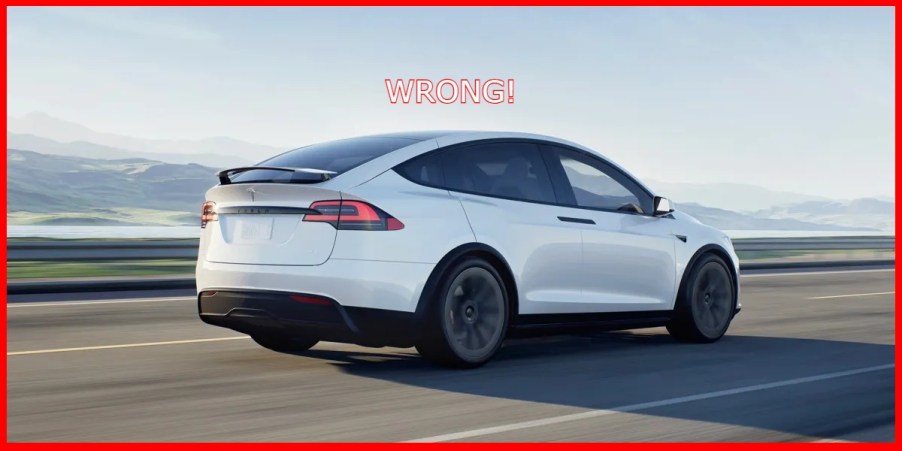
Fact Check: 5 Things About EVs That People Get Wrong in 2023
There is still so much to learn about electric vehicles in 2023. As the year comes to a close, consumers have access to much more EV info leading into 2024. Some of the misconceptions about electric vehicles are deterring consumers from pursuing them. Many of these misconceptions about electric cars, trucks, and SUVs are flat-out wrong. Here are five things that people generally wrongly assume about electric vehicles.
1. Electric vehicles are unaffordable in 2023

There are several affordable electric vehicle options on the market in 2023. Some of these options have starting prices under $40,000. Furthermore, many of these affordable electric vehicle options happen to be some of the best choices on the market.
| Affordable 2023 and 2024 electric vehicles under $40K | Starting MSRP |
| 2023 Chevrolet Bolt EV | $26,500 |
| 2023 Chevrolet Bolt EUV | $27,800 |
| 2024 Nissan Leaf | $28,140 |
| 2024 Chevrolet Equinox EV | $34,995 |
The idea that EVs are too expensive for the average American is a common misconception. Though many EVs have high starting prices, there are several electric vehicle nameplates that are affordable enough for most drivers. Furthermore, electric vehicles under $50K, like the Tesla Model Y and Hyundai Ioniq 5, provide incredible value for the money.
2. Electric vehicles don’t have enough cargo space

The days of teeny tiny electric vehicles are long gone, at least as far as mainstream EVs go. Sure, there are still some popular electric hatchbacks on the market, but these aren’t best-selling models.
The electric vehicles that are currently making the most impact on the market are small electric SUVs like the Volkswagen ID.4 and Kia EV6. Furthermore, automakers are developing larger electric vehicles like the Kia EV9. Eventually, there will be plenty of electric midsize and full-size cars, trucks, and SUVs.
For now, there are a few electric vehicles that have plenty of cargo and/or cab space, like the Ford F-150 Lightning electric truck and Rivian R1S electric SUV. EVs are getting larger with time, and plenty of midsize electric SUVs are on the horizon for the next few years.
3. Electric vehicles aren’t actually good for the environment
Yes, producing electric vehicles can produce more carbon emissions than internal combustion engine vehicle production. However, what many drivers fail to realize is how much electric vehicles can reduce a person’s carbon footprint over long-term ownership.
Within just a few years of ownership, the emissions that an ICE vehicle produces far outweigh the emissions produced by an EV’s production process and the EV itself. Additionally, automakers like Tesla are streamlining this process and making it as green (and cost-effective) as possible.
4. Electric vehicles are dangerous to own

Have electric vehicles faced serious reliability issues? Sure. Does that mean that the vehicles are dangerous to own in general? Not so much.
Plenty of drivers own electric vehicles and don’t experience issues. The main problem with most EVs occurs when their battery overheats.
If you are mindful of your vehicle’s true energy consumption and degradation due to external factors, you can have a relatively simplistic ownership experience. If you don’t pay attention to how much charging your EV needs and how much power it regularly uses, things could get hairy.
So, electric vehicles can be a hassle to own at first, but they aren’t inherently dangerous. In fact, many EV owners argue that their vehicles are actually safer than ICE vehicles thanks to futuristic advanced driver assistance and safety features.
5. There aren’t enough charging stations for EVs to be practical
If you think America needs more electric vehicle charging stations, you’re absolutely right. That said, according to Reuters, the U.S. Government is spending $7.5 billion to expand the usage of Tesla’s extensive supercharging network to other automakers. Major rivals like Ford are already offering the option to use Tesla chargers to consumers.
Do we need more EV chargers in America? You’re darn skippy. However, thousands of electric vehicle owners regularly access electric vehicle chargers from companies like Tesla weekly, and EV charging is a multi-billion dollar industry. There’s a clear demand, and supply is bound to catch up sooner rather than later.



